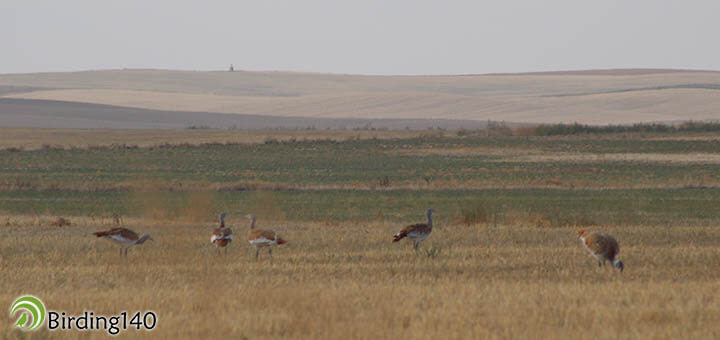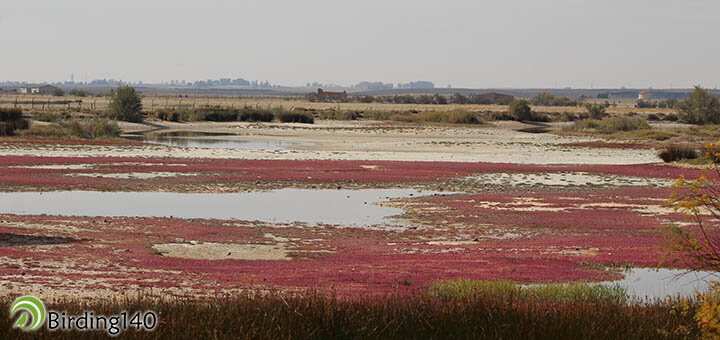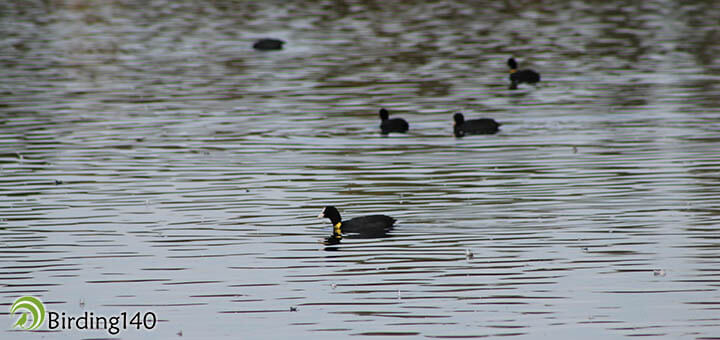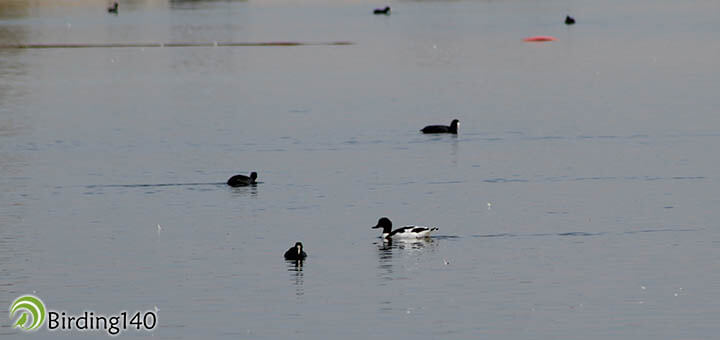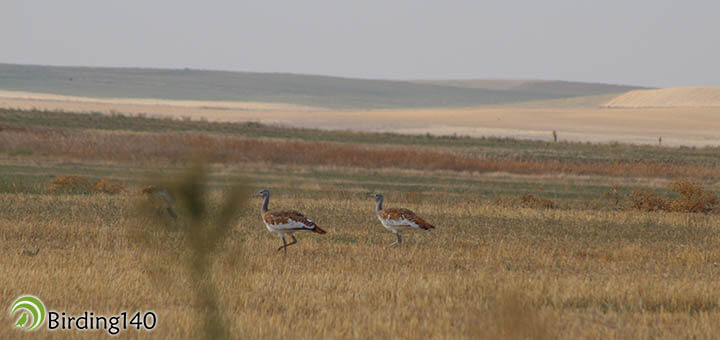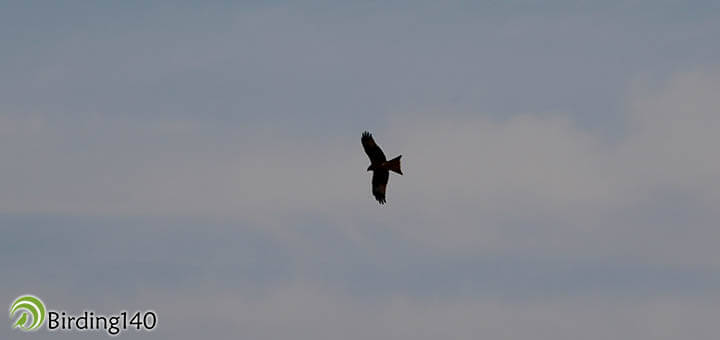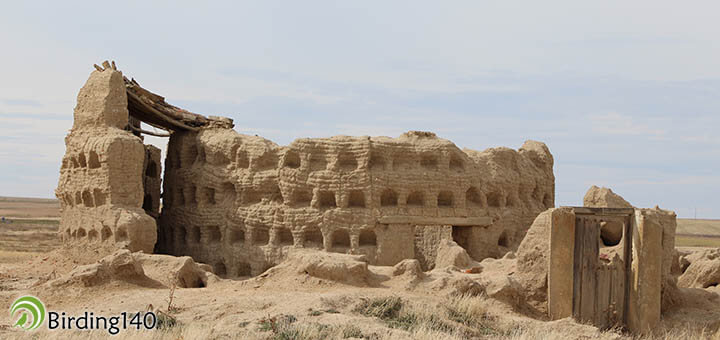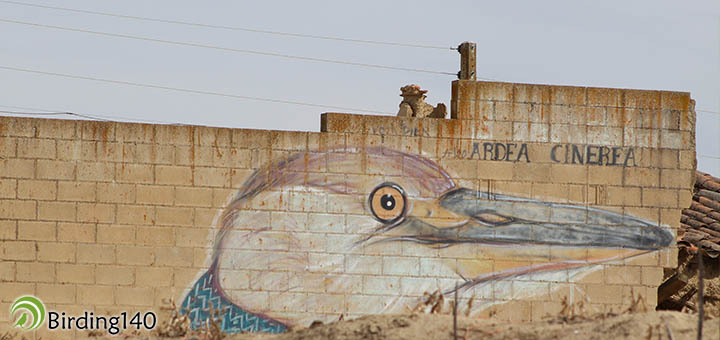Almost a year after our last visit, we returned to the Villafáfila Natural Reserve to enjoy migratory birds. On our way to the lakes along the road from Villalpando to Villafáfila, we were surprised by the ochre and golden tones that still covered the pasture.
As we were getting closer to the Natural Reserve, we discovered that the rain hadn’t yet reached this enclave of the Zamoran plateau. The pseudo-steppe was showing us its cruellest and most devastated side. We were only greeted by three crows that decided to cross the road from a nearby post.
The surprise came after crossing the municipality of Tapioles, in a fallow land on the other side of the road. The enigmatic plumage of these birds made them hard to see, despite them being less than 20 metres away from our vehicle. The possibility of seeing these steppe giants so close made our hearts race. We still get thrilled by the sight of bustards in Villafáfila. This is how we are.
On the other side of the road, a small group of five bustards was hiding between the high thistles. It’s quite difficult to acquire the skills to see these winged giants. Over the white down feather, the tangle of ochre and sandy colours on their back gets perfectly mixed with the arable land. The bluish grey colour of their necks and heads make a blur of their bodies. In Villafáfila, however, it is easier to see the heaviest flying bird in the world due to the high density of the species in the Natural Reserve. There you can find the largest number of specimens in the planet. This, together with their herd behaviour and the confidence they have in the vehicles driving around this area, makes their sighting frequent and relatively easy.
Despite the low traffic on the roads in the Reserve, we would like to appeal to all the enthusiasts wanting to see birds from their vehicle. We suggest to bring the optical equipment inside the passenger compartment, to signal the stops, to use hard shoulders and designated areas to change direction, as well as respecting signposting and traffic regulations. This is the only way we can coordinate driving and bird watching in a safe and comfortable manner.
We continued along the road until we reached the Barillos Lake and its observatory. Dust and dried mud had replaced the sheet of water. A white saltpetre mark stressed the perimeter, and the salicornia, with its reddish tones, gave a colourful note to the environment, dried by the high temperatures. The nest boxes placed over the posts were yet to be occupied by birds of prey.
The bleak picture led us to El Palomar Park House. We left the vehicle in order to start the route, guided by the guards, to celebrate the Bird Day 2015. Thanks to the miracle of human wit, we could finally see water there. In the first observatories we found a great number of Mallard specimens. On an islet, a small group of Greylag Geese complained about the proximity of coots, which significantly outnumbered them.
Two specimens of coot stood out, marked with plastic rings as yellow collars. Those plastic collars included an alpha digital inscription that should be indicated to the guards of the Reserve or the Bird Banding Office of the Doñana Biological Station through the email address charina@ebd.csic.es. This kind of banding is carried out in a reduced number of specimens for very specific studies.
The small group of the guided visit entered the different dovecote-shaped observatories. The small adobe structures had small height doors which reminded of the authentic constructions that can be found scattered around Tierra de Campos. Among the coots, the grebes dove again and again in search for food, carrying out rhythmical immersions before the passiveness of a Common Shelduck specimen. In the sky, three Red Kites were awaiting a mistake in order to get their food. The orangey kites with white wing tags rose and fell in the air, scanning the activity of the lake.
The next observatory had the evocative surname of “the bustards”. There we could enjoy two individuals who, relaxed and confined to bed, passively saw how a Grey Heron ran away, terrified by our presence. Their bodies, pressed against the dry vegetation, were blurred by the earthy ochre colour with black spots of their backside, wings and tails.
We continued the pleasant walk talking about the waders that can be found in the area around this time of the year. In a real salicornia field painted with reddish colours, plovers and sandpipers were running around on a small pond which stoically resists the last heats. The halophile vegetation formed by tamarix, salicornias and suaedas that we found has partially allowed the lakes to be declared an SCI (Site of Community Importance).
As we were talking, a tight and premature flock of lapwings overflew our heads. Our guided visit ended with the failed attempt to see the Little Owl that we were said to be around the parking lot. From these lines we thank for the visit and the work carried out by the rangers of Villafáfila in environmental education matters.
After a lunch stop in one of Villafáfila’s taverns, we resumed our visit to approach the abandoned village of Otero de Sariegos. The devastating sight of the completely dry Salina Grande improved when we saw the huge reddish salicornia spots and the melancholic picture of the collapsed dovecotes against the background of the village.
We were surprised to see that an anonymous artist had painted the head of a Grey Heron, as the inscription says, in a wall of the village. It is, without a doubt, a note of colour in the bleak picture of an abandoned village.
Before the dovecotes of Otero, we were awaked from our trance by the rhythmical and distant trumpeting that reminded us that the cranes were arriving to the wintering quarters. Between a small grove of reforestation pines and the Salina Grande was the final surprise of our visit: three beautiful crane specimens, the first ones of the season for us, announced the arrival of better times.
From this blog we encourage all of you to take part in the second edition of the cooperative experiment that will allow us to see how cranes are moving around Europe. To do this, you only need to use the hashtag #birding140 and indicate the place, date and time of the sighting, as well as the number of specimens. You can add a picture if you wish. In this fast and simple way you can help us describe the map of movements that these ladies of the sky make throughout the European territory.
Without time for more, we started our way back. The view of the bustards and the first crane sighting gave us the feeling that we will soon return to the saline lakes of these Zamoran lands. When we looked at the rear-view mirror, we could observe a distant group of leaden clouds presaging the expected rain. Soon the sheets of water will recover their wintery status.

